Wildlife of Metropolitan Tama Hills Natural Park
Long-tailed tit
Many wild birds can be observed in the Tama area. These birds include those who reside in the area year-round, migratory birds who live in different areas or altitudes depending on the season, migratory birds who pass through on their way to their destination, and summer birds and winter birds. Among these birds, the long-tailed tit (Aegithalos caudatus) is one of the most commonly seen species in the Tama area. Its body is about 14 centimeters long, and it has a long tail attached to a body that resembles a ball of cotton. The body excluding the tail is much smaller than that of the sparrow. Because long-tailed tits tend to flock together, they can become quite noisy in the evening when they nest in the trees of urban areas.
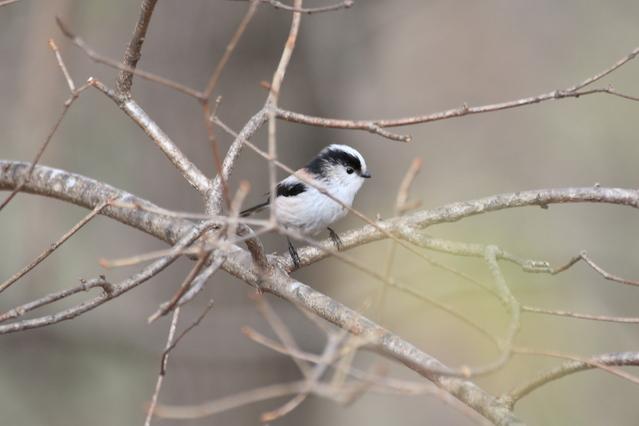
Eastern-Japanese Common Toad
The Eastern-Japanese common toad (Bufo japonicus formosus) is a large toad commonly called gamagaeru in Japan. It is a subspecies of the Japanese common toad (Bufo japonicus). This toad has warty outgrowths over its entire body and secretes a toxic fluid from the ear gland behind its ear drum. It is tolerant of dry environments and rarely goes into the water, except during the mating season. It usually lives in mixed forests and home gardens. These frogs lay string-like eggs in ponds and rice paddies around March, but the offspring remain tadpoles for only a short time. The tadpoles transform into tiny frogs and quickly move to the land, where they grow larger.
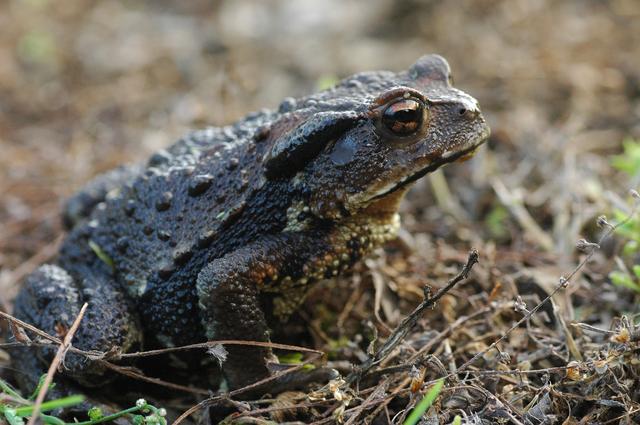
Asian Swallowtail and Old World Swallowtail
The Asian swallowtail (Papilio xuthus) and the Old World swallowtail (Papilio machaon) can be seen looking for flowers in sunlit fields from around March to November. The Asian swallowtail has striped patterns at the base of its forewings. The Old World swallowtail’s wings are marked with blackish patterns. Both species take on a yellower hue at the end of summer. It is easier to distinguish between the Asian Swallowtail and the Old World Swallowtail when they are flying, because the Old World swallowtail flies quickly across open fields.
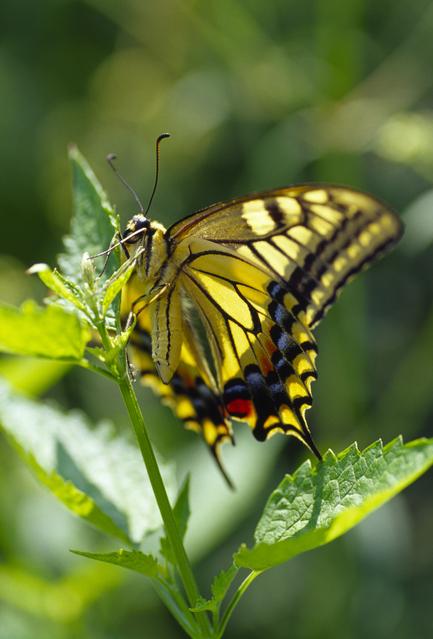
Orthetrum japonicum and Mnais costalis
Orthetrum japonicum is a relatively small dragonfly seen in hilly areas and low mountains from mid-April to June. The females and juvenile males are yellowish, while mature males have white bellies. Mnais costalis is a type of damselfly that can be seen near clean streams from mid-April to June. The males have orange or transparent wings, and the females have transparent wings with white pterostigmata.
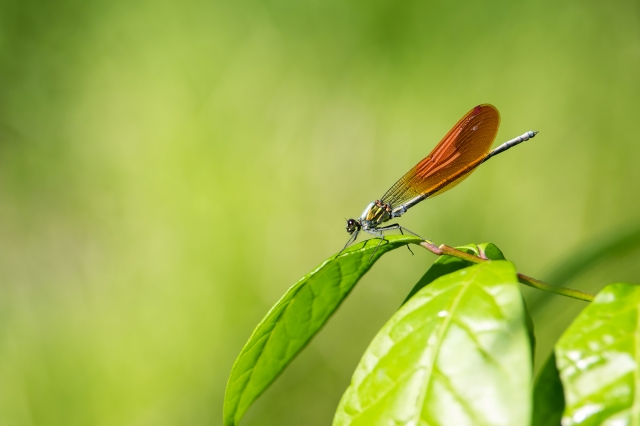
Viola grypoceras
The viola is one of the most common spring flowers. Among the many species of viola, Viola grypoceras is the most popular type of viola in Japan, and is considered representative of the Tama Hills. The Japanese name, tachi-tsubo-sumire, means “viola that stands in the garden.” “Tsubo” is a traditional unit of area that is equivalent to about six square feet, and can be used as a synonym for “garden.” About 60 viola species have been discovered in Japan thus far. One of the most important ways in which these violas are distinguished from one another is the presence or absence of subterranean stems. Viola grypoceras has subterranean stems, which grow vertically as the plant matures, and leafstalks and flower stalks emerge from the middle of the stems.
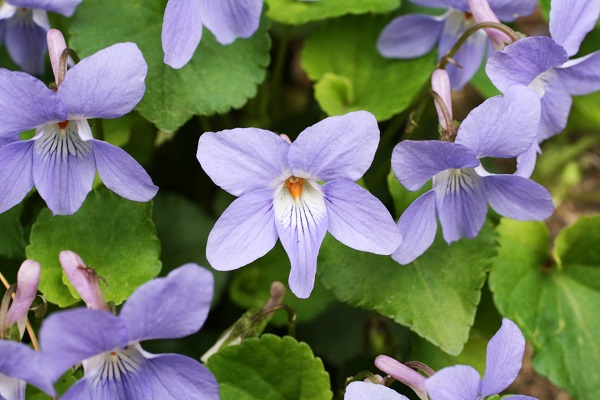
Early Stachyurus
Early Stachyurus (Stachyurus praecox) is a deciduous shrub in the genus Stachyurus and the family Stachyuraceae. The height of these shrubs is about three meters, but sometimes as high as seven meters. They are commonly seen in the mountains. Their trunks grow straight upward, producing many branches that reach three to five meters above the ground. Early Stachyurus can be seen on slopes in the forest edge and in valleys. The new leaves start growing during the period from March to May, but before that, the plants produce light yellow flowers called racemes. The stems of these flowers, which are three to ten centimeters long, emerge from the axil of branches from the previous year and hang down to become covered with flowers. These flowers stand out, because they bloom during a season that is still too early for many other flowering plants.
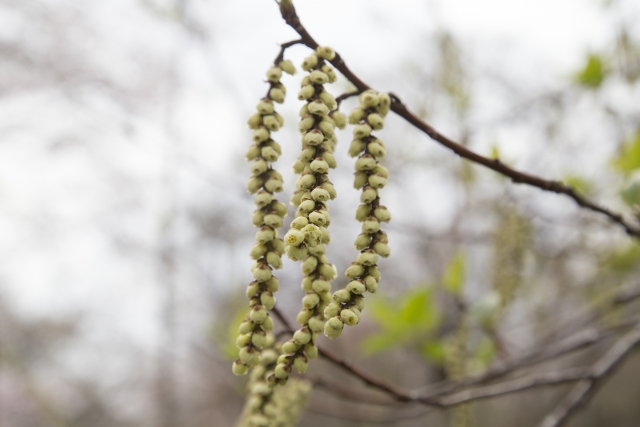
Aster microcephalus var. ovatus
Aster microcephalus var. ovatus is a type of wild chrysanthemum that looks very similar to Aster yomena. The variation within the species is great, and individual specimens can appear quite different from one another. The subterranean stems grow horizontally and branch off in all directions. As a result, this plant can be characterized by the formation of large colonies. Its stems grow upright and produce branches that reach a height of 50 to 100 centimeters. These asters bear flowers even when they are trimmed very short.
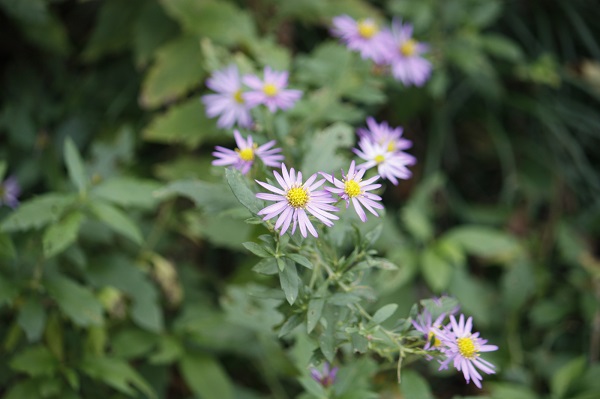
Lonicera ramosissima
Lonicera ramosissima, a deciduous shrub that is endemic to Japan, grows to a height of about two meters. It produces many dense branches, and can be found throughout Japan. In the Tama Hills, it is often seen on the sunny edges of forests. It bears pretty pink flowers that hang down from the base of the leaves from early to mid-spring.
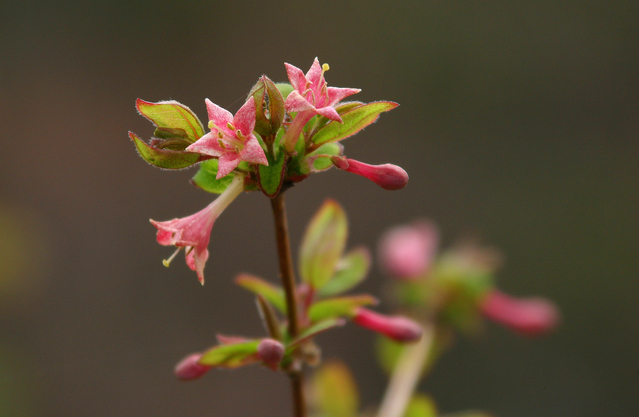
お問い合わせ
このページの担当は自然環境部 緑環境課 自然公園計画担当です。
Related link
Metropolitan Tama Hills Natural Park
- Features of Metropolitan Tama Hills Natural Park
- History of Metropolitan Tama Hills Natural Park
- Wildlife of Metropolitan Tama Hills Natural Park
- Sightseeing in Metropolitan Tama Hills Natural Park
- Accessing Metropolitan Tama Hills Natural Park

